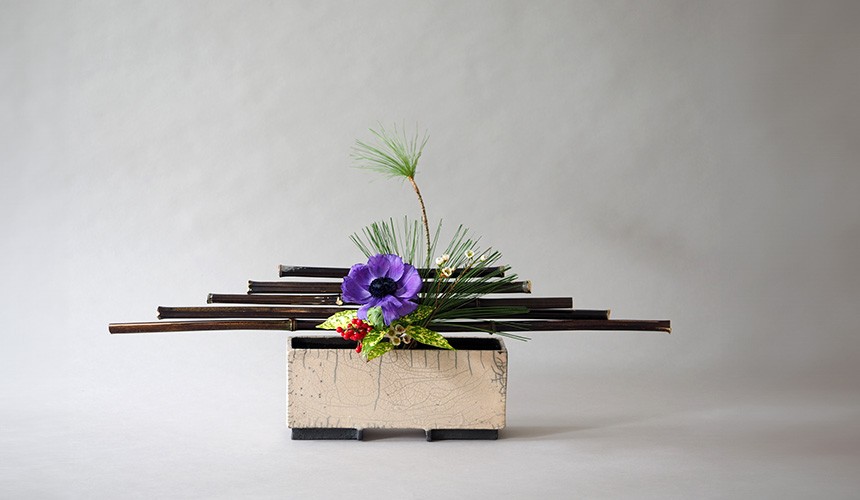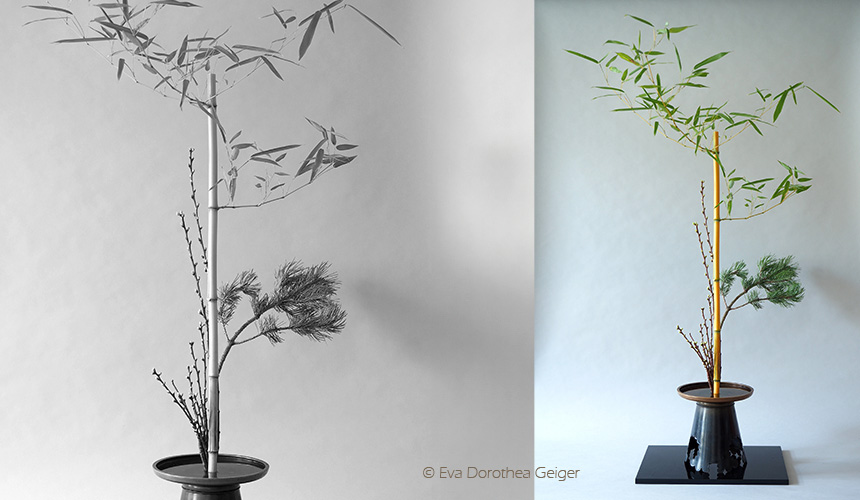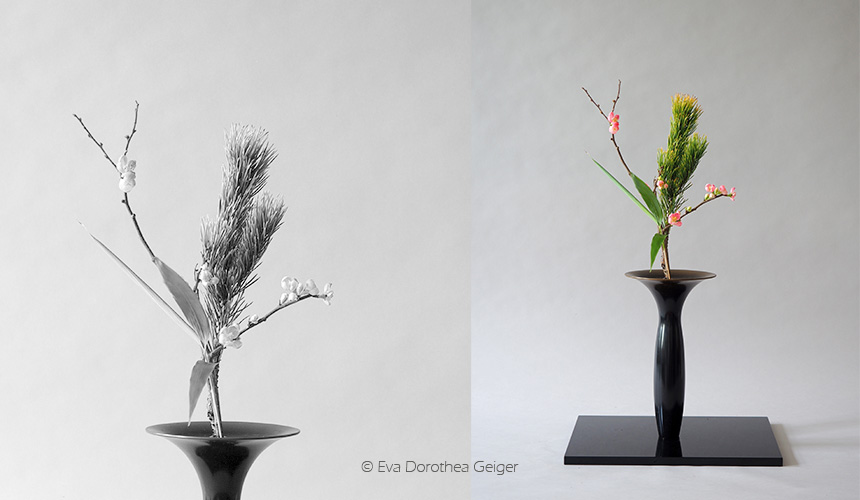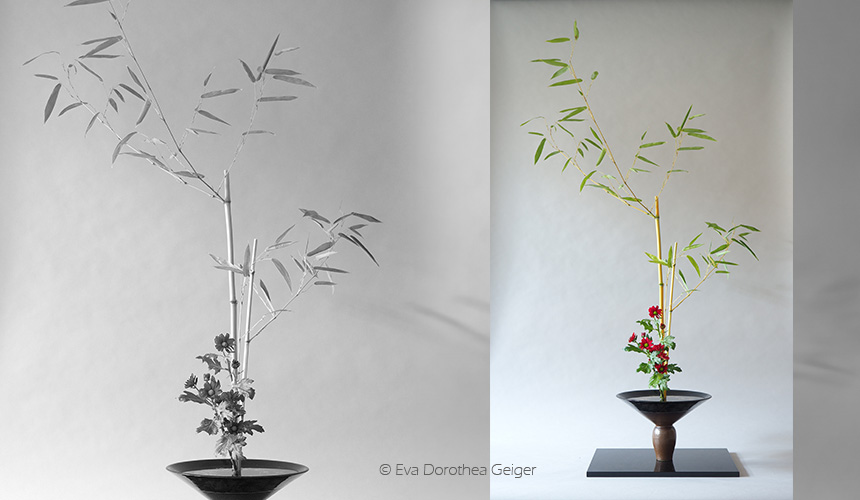
The hatsu-ike 初生け, the first arrangement of the year, which is made up of the characters hatsu 初 (the first) and 生け (Ike) from the term ikebana, stands for the first ikebana of the year. It is not just a ritual, but also celebrates new beginnings and the art of living in harmony with nature. In the spirit of hatsu-ike, kadokas create special arrangements to mark the transition into the new year. This practice is a symbolic gesture for renewal and reflects the hopes and aspirations for the coming year. It demonstrates the basic principles of ikebana: harmony, respect, purity and tranquillity.
For the "Hatsu Ike", carefully selected flowers and branches are arranged in a harmonious composition to embody the essence of the current year and awaken positive energies for the future. It is an opportunity for Ikebana practitioners to showcase their skills and express their creative interpretation of the season and spirit. Traditional symbols and colors associated with the New Year are also often used in "Hatsu Ike" to create an atmosphere of celebration and optimism.
The Hatsu ike should have a festive character, but also express the joy of a new beginning. In the above jiyûka, black bamboo, anemone, aucuba leaves, waxflower and holly were used. 
SHO CHIKU BAI - The three friends arrangement
A very traditional and classic arrangement for the first arrangement of the year is the shō-chiku-bai (松竹), which consists of the 'three friends of winter': "Pine (松), bamboo (竹) and plum (梅).
The three friends - pine, bamboo and plum - play a central role in Japanese culture and aesthetics and symbolize important virtues and the changing of the seasons.
The pine tree, a symbol of longevity and strength, is green all year round and defies even the harshest conditions. It stands for constancy and endurance, qualities that are highly valued in Japanese culture.
Bamboo symbolizes flexibility, sincerity and resilience. It bends under pressure but does not break, making it a symbol of adaptability and resilience. In addition, bamboo grows quickly and therefore stands for growth and progress.
The plum, often associated with the beginning of spring, symbolizes hope, renewal and beauty. Its flowering in winter makes it a sign of steadfastness in difficult times and its incomparable beauty lends it a certain elegance and grace.Together, the three friends form a popular motif in Japanese art, especially in painting, pottery and garden art. Their appearance together, often in different seasons, emphasises the continuity of life and the changes of nature. In Japanese philosophy, they serve as a reminder that constancy, adaptability and beauty are inextricably linked and that these virtues can be a source of inspiration and strength in all situations in life.
As plums are rarely available at the beginning of the year, the Shô chiku bai can also be arranged with other flowering branches such as cherry, quince or hawthorn. In the example, the plum has been replaced by cherry blossom branches, which blossom a few days later. Traditionally, the shô chiku bai is fixed in a hana kubari, which bears the name izutsu kubari.
A shôka shimpûtai can also be worked with the three friends. In this example, ornamental quince is used as a flowering branch material alongside bamboo and pine. 
Another traditional variation is the Shôka Shôfûtai Nishuike, which in this example is made with fresh bamboo and chrysanthemums.
